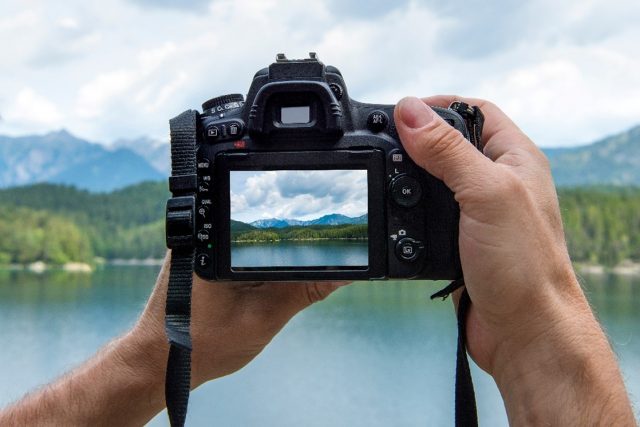Photography is more than just capturing a moment; Joe Blanchard of Asheville, NC, believes it’s about telling a story through a well-composed frame. Composition, the arrangement of elements within a photograph, is fundamental in creating visually compelling images. This article from Joe Blanchard of Asheville, NC, explores the art of composition, focusing on the key aspect of framing to enhance the impact of your photos.
1. Understanding Framing in Photography
Joe Blanchard of Asheville, NC, on Defining Framing
Framing in photography refers to the technique of using elements within the scene to create a ‘frame’ around the main subject. This technique draws the viewer’s attention to the intended subject and adds depth and context to the photo.
Importance of Framing
Framing plays a crucial role in enhancing the visual appeal of a photograph. It involves the strategic placement of elements within the frame to draw the viewer’s attention to the intended subject and convey a specific message or emotion. By using framing techniques such as leading lines, symmetry, and patterns, a photographer can create a more dynamic and engaging composition that captures the viewer’s imagination. Moreover, framing can also add depth and context to an image, helping to tell a story or convey a particular mood. Overall, effective framing is a powerful tool that can elevate a simple photo into a work of art.
2. Types of Frames in Photography
Joe Blanchard of Asheville, NC, on Natural Frames
Natural frames are found in the environment, such as tree branches, windows, or doorways. They are effective in giving the photo a sense of place and can beautifully encapsulate the subject.
Architectural Frames
Buildings, archways, and bridges serve as strong geometric frames. They are great for adding symmetry and structure to your compositions, especially in urban photography.
Shadow and Light Frames
Shadows and light can create abstract frames that add a dramatic effect to photos. This involves using light patterns or shadows to cast a natural frame over the subject.
Joe Blanchard of Asheville, NC, on People as Frames
Using people as frames is a creative approach, where parts of a person or a group can form a frame around the subject, adding a human element to the story.
3. Techniques for Effective Framing
Joe Blanchard of Asheville, NC, on Finding the Right Balance
The key to framing is balance. The frame should complement the subject without overpowering it. The aim is to enhance the subject, not to distract from it.
Using Depth of Field
A shallow depth of field can blur the frame, making the subject stand out. This technique is particularly effective when the frame is close to the lens.
Experimenting with Angles
Different angles offer unique framing opportunities. Experimenting with various angles can lead to discovering interesting frames that add a new dimension to the photo.
Paying Attention to Backgrounds
Be mindful of the background within your frame. A cluttered or distracting background can detract from the impact of your framed subject.
4. Common Framing Mistakes to Avoid
Joe Blanchard of Asheville, NC, on Overcrowding the Frame
Avoid adding too many elements into your frame, which can lead to a cluttered composition and confuse the viewer.
Blocking Key Elements
Ensure that the frame does not block any key elements of the subject. The frame should enhance, not obstruct.
Forcing a Frame
Not every photo needs a frame. Avoid forcing a frame where it does not naturally fit or contribute to the story of the photograph.
5. Creative Framing Ideas
Joe Blanchard of Asheville, NC, on Reflections and Mirrors
Use reflections in water, mirrors, or any reflective surface to create a unique and intriguing frame.
Using Color Blocks
Bright colors or distinct color blocks can act as frames, especially in minimalistic compositions.
Joe Blanchard of Asheville, NC, on Frame within a Frame
Look for opportunities to create a frame within a frame, adding multiple layers of depth to your photo.
Mastering the art of framing in photography is a crucial skill that can elevate the quality of your images to a whole new level. A well-framed photograph can make the difference between a mediocre shot and a stunning masterpiece. However, framing is not just about putting a border around your subject; it’s about creating a visual story that captures the viewer’s attention and emotions.
To achieve this, it takes practice, experimentation, and a keen eye for detail. You need to learn how to arrange the elements in your shot in a way that draws the viewer’s eye to the subject and conveys the desired mood or message. You must also be aware of the impact of negative space, lines, and angles on the overall composition.
But it’s important to remember that the best frames are the ones that feel natural and serve the story you’re trying to tell through your lens. You don’t want your frames to look contrived or forced; they should blend seamlessly with the subject and the environment.








